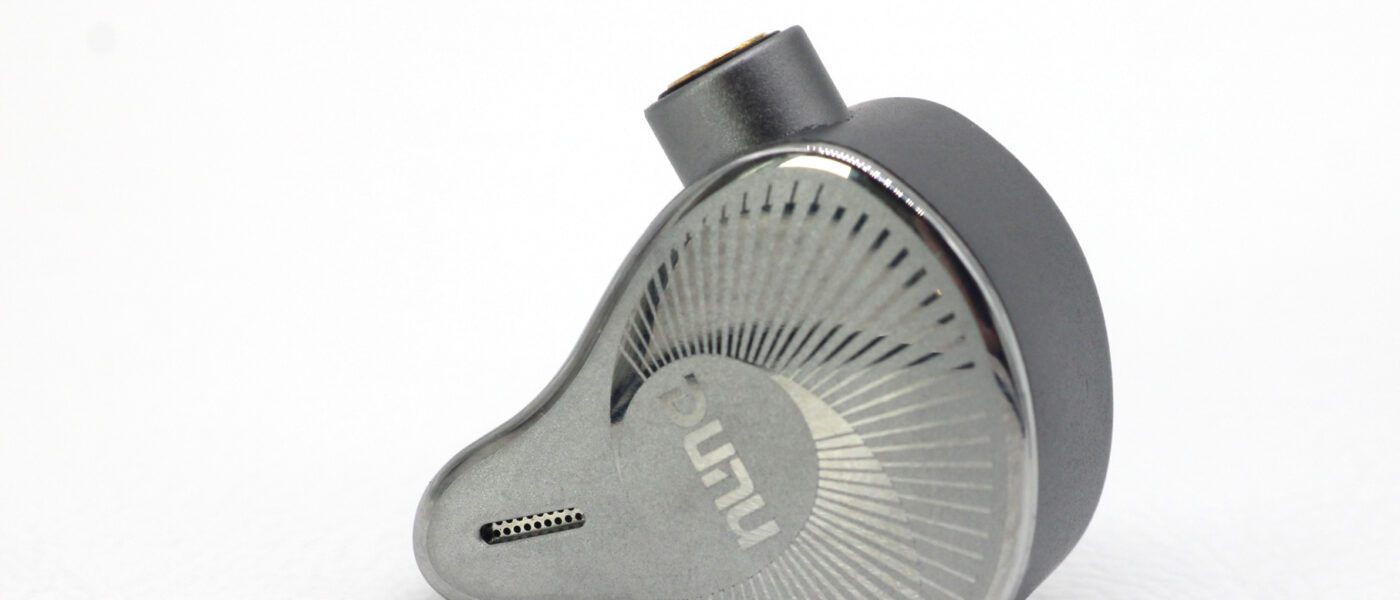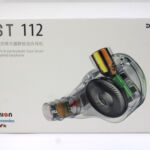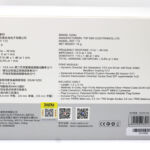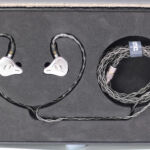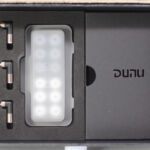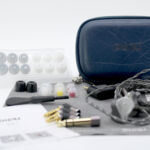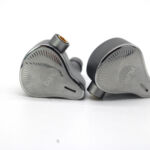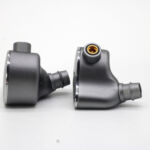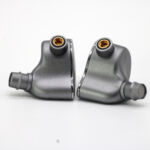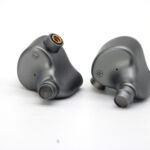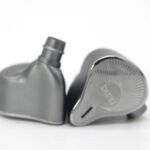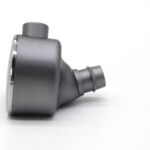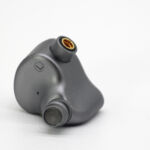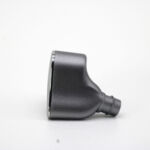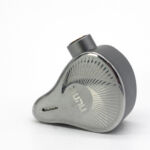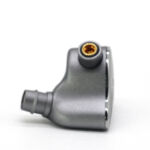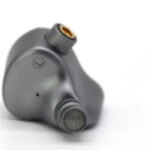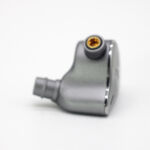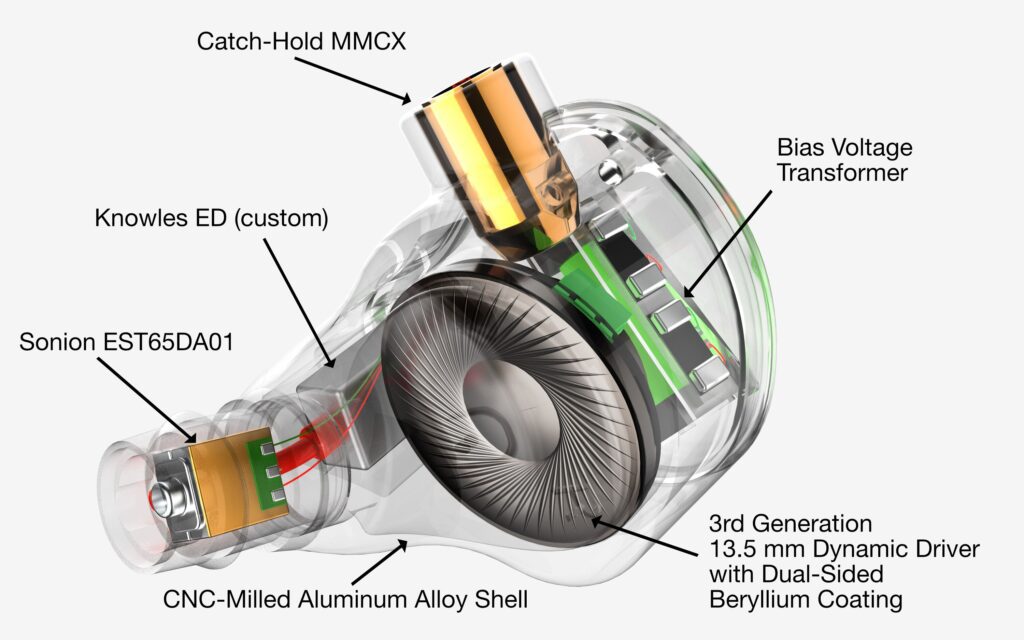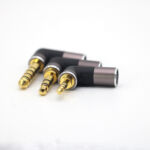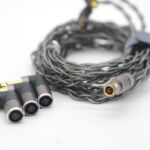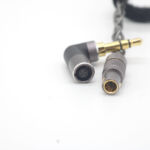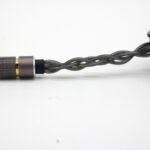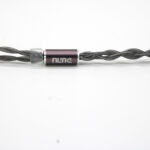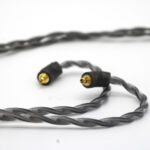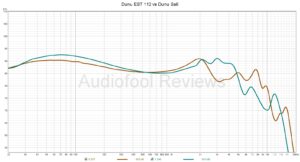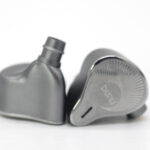DUNU EST112
disclaimer: I have reviewed several Dunu models and found most of them above average (with one exception) so when I as approached about reviewing the EST 112 I quickly accepted. The EST 112 was given to me for purpose of review by Dunu. I don’t have any financial affiliation with Dunu or any of its affiliates, nor have I received compensation beyond the in-ear itself for this review. If you have an interest in learning more, please see Dunu’s website or follow them on Facebook. The EST 112 can be purchased directly from Dunu’s website or from most of the usual outlets.
Unboxing / Packaging:
The EST 112 (shortened to 112 from here out) comes boxed in a book-fold style box with a slip-cover over it. The slipcover has the exploded diagram of the internals on the front and the specifications in Chinese and English on the reverse. The box itself makes a nice presentation case as well as storage with subtle logo on top and the earpieces and cable displayed in a heavy foam tray in what is vaguely reminiscent of a stethoscope shape. Under that top layer, another foam layer holds the jacks (2.5, 3.5, and 4.4mm), the tips (two types in three sizes each), and then the soft case is hiding beneath a flap on the right hand side. Inside the soft case are a set of comply foams, three sets of spin-fit tips, a cleaning tool, a 6.35mm adapter, and an airline adapter. This is a very complete kit regardless of price as it covers pretty much all the useful accessories. The one thing I would like to see is a proper 6.35mm jack for the modular cable system rather than using an adapter after the fact.
Build/Fit:
Shells on the 112 are machined aluminum with the faceplate being polished with the Dunu name and design and the inner shell being matte and a bit darker colored. Shells are the typical inverted teardrop shape and are medium in height and width but larger than average in depth. Depth is slightly over 1/2 the height of the earpiece where most of the rest of my collection is closer to 1/3rd. Weight is slightly above average as well but they sit well in the ear and the cables distribute weight well so they are not uncomfortable for extended wear. Face-plates have a large vent directly over the nozzle. A second vent is on the under side directly over the dynamic driver. This small pinhole vent can be obstructed depending on fit in the ear and will cause a shift in signature if obstructed. Nozzles are part of the inner shell rather than a separate component and do have a lip for tip retention. Installing tips is difficult initially as the bore is slightly undersized so there is little if any possibility of the tips coming loose under normal use conditions. MMCX connectors are housed in a raised extension of the inner shell on the forward side of the shell near the top. Connectors are gold plated brass and are well centered inside the extensions with no play or glue. I would warn that the depth of these may be a problem for some as they sit more on the ear than in it. If you have smaller ears, I suggest auditioning before purchase as the size may be an issue. If it is, try the Sa6 as it is a little easier fit and also a great product.
Internals:
The EST 112 is a tri-bred model using a 13.5mm dynamic driver, a customized Knowles ED balanced armature tweeter, and a pair of Sonion EST Supertweeter electret drivers. The naming convention reflects this 1 dynamic, 1 BA, 2 EST so not the most original of names, but at least more descriptive than most. This is an interesting mix of drivers as the 13.5mm dynamic was designed in-house at Dunu and has a beryllium coating on both sides of the diaphragm for enhanced stiffness while remaining as light as possible. The Knowles ED package is customized specifically to mate to the dynamic driver as tightly as possible, and the twin ESTs provide additional top end extension compared to a BA top end. Nominal impedance is listed as 10Ω with a sensitivity of 110 dB/mW. This makes the 112 easy to drive, but susceptible to problems caused by high output impedance of some sources. With most recent portables having an output impedance of less than 1Ω, this won’t be as big an issue as it would have been four or five years ago when it was not uncommon for sources to have output impedance of nearly as high that of the 112. I found it was easy to drive using a phone and dongle or a low powered dap, but it does scale well with additional power and with improvemetns in dac. My favorite pairing is with the WM1A which put the micro-detail level of the 112 on full display.
Cable:
The first time I used this cable was with the Sa6 and I commented at that time that the cable alone might be worth the cost of the Sa6. It is extremely well thought out and is the best modular cable I have used to date. It comes with 3 90º jacks in 2.5mm, 3.5mm and 4.4mm respectively. The user chooses which to use and it latches into the connector (Dunu calls it the Quick-switch modular system) on the cable very solidly without being overly heavy or bulky in the process. Cable material is 8 core mono-crystalline silver plated copper with 6 strands in clear casing and 2 in dark gray that provides an interesting contrast in the braid. The splitter is a silver barrel that matches the jack housing. A chin slider in the form of a silver bead rests neatly on top of the splitter with 4 wire braids exiting to the earpieces. The cable terminates in pre-formed earhooks and .78mm bi-pin connectors that fit down into recesses in the shells themselves for added strength. This cable is a lighter-weight version of the Dunu Hulk and I think I prefer it as it hits a nice balance between weight, durability, and comfort.
Sound:
Bass:
Sub-bass has good reach with roll-off not evident until the lower 20Hz range and a mild elevation for its entire range with a center at around 60Hz. The dynamic driver here is fast enough that even the sub-bass has good texture and doesn’t feel mono-tone as they often can. Mid-bass is fast with good note weight and drops back so gradually from the sub-bass that it can hardly be noticed. The FR graph shows a mild V but listening does not, listening shows good linearity with a sub-bass and upper-mid emphasis added. The mid-bass has good transient speed and I was impressed with the amount of detail and texture combined with enough impact to provide good realism. The 112 won’t please the basshead crowd as it doesn’t over-power the signature and instead steps forward only when called upon. You’d be forgiven for thinking the 112 was a bit bass light if the source material isn’t bass heavy.
Mids:
Lower mids follow cleanly from the mid-bass with very little bleed and no obstruction but do carry a little weight and warmth from the mid-bass. There is no discernible recess or drop-off when moving from mid-bass to mids. Lower-mids have good note weight with male vocals having a natural timbre and bass guitar having a pleasant tone as well. Guitar growl is also nice and sharp edged and realistic. Moving into the true mids, strings have good energy and texture and are well presented. Female vocals do step forward slightly in the mix due to a upper-mid lift and this is the one place there is a bit of that typical BA tonality at times with male vocals carrying a bit more weight than their female counterparts. Again the upper-mid push rises to roughly the same level as the bass emphasis so doesn’t jump out as the dominant feature, but does help vocals cut through the mix and give the 112 a bit of life that a true neutral lacks.
Treble:
The lower treble drops back quickly after the upper-mid push and keeps the 112 from getting quickly fatiguing. As we expect with the combination of armature and electret drivers, treble detail is quite good with plenty of micro-detail and nuanced textures. Snare rattle is exceptionally good with crisp lead edges and natural decay and may be the best I’ve heard at this price. Cymbals have good eneare not metallic but again need a touch more energy to feel entirely real. There is a little extra energy added back at 9kHz before a drop between 10-11kHz but it wasn’t large enough to bother me and I tend to be very sensitive to 9kHz spikes so I suspect if you are like me and see a peak in that range and run the other way, this one is probably pretty safe. Final roll-off is above my hearing threshold and air and sparkle are quite good as we expect from an electret driver. Overall, the tuning here walks the line well with enough energy to sound natural but not enough to be quickly fatiguing. This is not to say a steady diet of treble rich tracks won’t fatigue as that is unavoidable, but the 112 itself isnt adding to that which the source presents.
Soundstage / Imaging:
Soundstage is one of the big strengths of the 112. It gets a little tiresome to write about soundstage on in-ears as most are way behind a good open back headphone and even the good ones leave a bit to be desired in the broader scheme of things. I am happy to report that the 112 has a nicely sized and proportioned stage with echos reflecting like you expect in tracks like “so lonesome I could cry” and instrument separation is above average as well. This makes seating the orchestra straight forward without any odd placements or overlaps. Layering is good as well which helps as tracks get more complex and faster. I noted very little compression in the dynamic driver even with the busiest bass passages as well. Imaging is also very good with the 112 being a capable in-ear for gaming or movie watching. Most of the image is in front of the head with good stereo separation and lateral spread .
Comparisons:
Boy is this a tough one. There are so many good iems in the $500 range these days that picking one or two to compare is always going to leave people asking why you didn’t compare it against X instead of Y. I picked the obvious compares of the Dunu Siblings, the DK 3001 Pro and Sa6, the Moondrop S8/A8, and the Fiio Fa9/FH7. Now if that is the list I whittled it down to, imagine the starting point. This price range is crowded with lots of good options so standing out is a tough one.
First up has to be the Dunu Sa6 as this is one of the current market leaders and many will ask “why dilute your own pool?”
The Sa6 differs a lot physically from the 112 with its acrylic and stabilized wood shell, bi-pin connector, and all balanced armature internals. It is smaller and thinner than the 112 with an easier fit for smaller ears, although I spent more time fiddling with the Sa6 to find a good fit than I did with the 112. When the Sa6 hit the market not long ago, it made quite an impact as the bass has enough impact to fool you into thinking it could be a dynamic driver and above the lows, the tuning and detail are on par with models costing a lot more. The 112 has a little less mid-bass and a bit more sub-bass compared to the Sa6 so those missing that rumble will prefer the EST. Mids are fantastic on both so hard to declare a winner there. Treble is tuned very differently with the 112 having less lower treble emphasis and a much higher roll-off while the Sa6 has more lower treble and then drops back considerably earlier. Those looking for top-end sparkle and air will prefer the 112 while those who are a bit treble shy will likely enjoy the Sa6 a bit more.
The Dunu DK-3001 Pro is arguably the parent of the Sa6 with a dynamic driver for lows and the same complement of balanced armatures above that point. Following the lineage, it is either a grandparent or a great uncle to the EST 112.
Shell shapes are entirely different but both use a brushed metal shell, mmcx connectors, and the 13.5mm dynamic driver. Lows are very similar on these two with the 3001 having more sub-bass emphasis and a little more mid-bass as well while to my ear the 112 is a bit faster and cleaner in those same ranges. Mids favor the 112 but not by a lot as the tonality is a bit better and the 3001 suffers from some plasticity in the mids that the 112 manages to avoid. Treble detail also favors the 112 by a good margin. To my ear, the 112 is a direct successor to the 3001 pro having improved on it in most measures.
Moondrop is quite possibly Dunu’s strongest competitor across the full range from budget to flagships so it would be remiss not to include the S8 and A8 that are Moondrop’s competitors at this price point and share a lot of commonality to the EST112 and Sa6.
The two Moondrop models (s8 and a8) can be covered in a single discussion as they share more than not. Both use the same acrylic shell and are about the same size as the 112 but considerably thinner so fit is a bit easier. The A8 and S8 share most of the same signature characteristics as they share all the same components except the bass drivers where the s8 uses a Sonion 37 and the a8 uses a Knowles CI package. Both have some plasticity due to the all balanced armature arrangements with it most evident in the mids. That is about the only knock I can throw at these two at the price point and the S8 is favorite of mine as it has a bit more sub-bass and a bit fuller low end compared to the A8. Having said that, I prefer the 112 over the A8 and maybe very slightly over the S8 for its mid-range presentation and better sparkle.
If Moondrop isn’t the strongest competitor to Dunu, Fiio probably is. Fiio has concentrated on the lower end market but increasingly is moving into the higher price ranges and offers some tremendous iems for the spend in those mid-tier brackets. The two closest to the EST112 are the Fa9 and FH7.
The FH7 is arguably the Fiio version of the 112, Aluminum shells with mmcx connectors, a 13.5mm beryllium diaphragm dynamic, and customized Knowles DFK and SWFK balanced armature packages are the defining features of the FH7. Even size is similar although the FH7 is somewhat thinner than the 112 but is large enough that either probably warrants auditioning before purchase for smaller ears. The FH7 offers tuning filters to adjust the sound so is a bit more versatile in that respect but none of those filters bring the mids up to the level of the 112. To my ear, Fiio did a great job with the lows and highs on the FH7 but the mids are just not up to that same standard. I listen to a lot of strings so this is a cardinal sin for me but may not have as big an impact for others. To me, bass favors the FH7 slightly, mids favor the 112 considerably and treble is a wash.
Arguably, the Fa9 is closer to the Sa6 than the 112 but it is the other Fiio product at the $500 mark, so I include it here. Shells are acrylic and smaller than the 112 so fitment may be a bit easier. Tuning options are provided by switches this time instead of screw on filters but arguably are less intuitive with one switch being for impedance and two for tuning. Sub-bass rumble favors the 112 with its dynamic driver over the armatures of the Fa9 and mid-bass is also a bit more detailed on the 112. The Fa9 has a bit of a dip in the lower mids that also keeps it from challenging the 112. Overall, I prefer the tuning of the Fh7 over the Fa9 and the 112 over both of them.
Thoughts / Conclusion:
Dunu has been crushing it lately with the 3001 Pro, 4001 Pro, Sa6, and now EST 112 all becoming solid recommendations in my opinion. The EST112 combines some of the features of the 3001 and others from the Sa line and represents Dunu’s first foray into the electret drivers that have recently become available. I am particularly impressed with the the lows and mids on the 112 which seems a little odd considering its dual EST drivers that focus on the top-end. I expected the 112 to have plenty of top end, and it does, and I figured the big dynamic would have good impact and it does, but that leaves the middle ground where the dynamic and balanced armature overlap to handle the mids. Generally this is a problem area as mixing two drivers to cover any single range often results in some in coherency and often the mids suffer when a sub-woofer tuned dynamic is combined with a BA tweeter with the idea that the mids will be ok between the two. The 112 pleasantly surprised me as the mids sound no less coherent or present than the mid-bass or lower treble and even though they are partially served up by an armature, that typical plasticity associated with BA drivers is minimized and rarely on display here. The EST112 isn’t perfect as the treble tuning won’t please everyone, and bassheads will lament that it doesn’t have enough punch but for all of us in the middle ground, it offers a great listen for the budget and is dangerously close to things costing a lot more. I may just like it better than my JH and that says a lot.
-
Bass - 8/108/10
-
Mids - 8/108/10
-
Treble - 7.5/107.5/10
-
Soundstage - 8.5/108.5/10
-
Imaging - 8/108/10
Summary
Pros: solid build, excellent tonality, fantastic stage and imaging.
Cons: Large size won’t fit everyone, only average isolation

